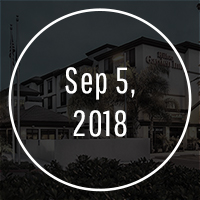The Chargers, Convention Center and Taxes: A Primer
This is one man’s opinion. I am an Independent, so Democrats and Republicans alike will disagree with me. I am not a member of the Lodging Industry Association or the San Diego Hotel Motel Association, so I am not privy to their positions on these issues and many of them will disagree with me. Lastly, I do not own any land or property downtown that would give me any reason to prefer a certain outcome. I’m certain that many will assume I will benefit from my ideas; that goes with the territory. There is nothing here but a love for San Diego and the Chargers. Below are my thoughts.
Chargers
Clearly, the Chargers are playing the leverage game with their deal with the Rams in LA but they had no choice but to have a Plan B in the event San Diego voters say “no.” So how do we get a deal done?
Certainly there is no reason to start with animosity toward them. This must be civil discourse. The Chargers want to be downtown so assuming downtown is the plan, this would require cooperation among several players–JMI (they own the most likely land), the tourism industry (they have to give up the contiguous convention center) and city and county officials. Further, the public will have to vote but let us face some facts, it is a difficult sell to convince residents that a new Chargers facility is an economic boost for San Diego. It is in fact a great civic pride boost and as a Chargers fan who watches them and attends games dressed in Charger blue, I love football and want the Chargers to stay in San Diego.
Convention Center
It has always been a preference for a contiguous convention center on the waterfront by almost everyone except for Cory Briggs and his supporters. In litigious San Diego, can a waterfront expansion ever occur? Hoteliers voted to fund the center with a plan that would tax downtown hotels at 3 percent, hotels in certain sub-markets at 2 percent and those in the distant periphery at 1 percent.
Now, Cory Briggs and a few San Diego leaders have come up with a 3 percent net increase in hotel taxes that is called the “Citizens Plan”–I’m a citizen and I know it is not my plan. Having said that, there are some good points made by this plan. First, if a contiguous center cannot be built, maybe we should look at a non-contiguous plan. JMI has the land and has proven they can develop downtown–Petco is a great example. Second, the Chargers would likely agree to stay in San Diego as part of a downtown Convention Center/Stadium combination so long as they secure the public support/funding. They have even provided a rendering of what that combination would look like!
In an effort to obtain the necessary approximately 67,000 signatures by June 8th to qualify for the November 8th ballot, the Chargers have released some beautiful renderings of what a convention center/stadium combo could look like. The nautical feel of the design is truly a great representation of the city of San Diego.
Always keep in mind though that renderings tend to give more life to a structure than the finished project. The combo also boasts a retractable roof which would turn the field into 100,000 square feet of pillar-less convention space. These efforts towards a compromise do not go unnoticed. The project is estimated at $1.8 billion and the team is requesting public financing to be covered by a 4 percent net increase in hotel tax.
Make no mistake, while many believe this is all about the Chargers, the economic return on a convention center is outstanding in San Diego. Arguably, San Diego is one of the very few convention cities that would benefit from an expansion of their center. Most cities only get a brief burst of construction spending and never get a real return on their centers. This city has the hotels, climate, attraction package and desirability to move large conventions here. Jobs, tax dollars and businesses that will create an even better lifestyle for local residents are major ancillary benefits. After all, “happiness is calling” here in San Diego.
Taxes
In my opinion, it is never a good idea to raise taxes unless absolutely necessary. The argument the “Citizen’s Plan” makes is that we should be equal to other cities in hotel tax rates. Really? How is it a good idea to increase taxes just so we are at an equal rate to other cities? Is there not some competitive advantage to having lower tax rates? After all, hotel room rates are considerably higher than most of our competitors, due in large part to land and construction costs, and access via air is much more difficult and expensive than most of our competitors.
Further, for hotels outside of the periphery of downtown, rather than paying a 1 percent increase to 13.5 percent as per the agreement reached under then Mayor Sanders, now those hotels would pay 15.5 percent. Currently, all hotels in San Diego pay 10.5 percent to the city and 2 percent to the Tourism Marketing District, a fee that was self-assessed by hotel owners. All of that 2 percent goes to tourism marketing which in turn allows us to stay competitive with marketing heavyweights Disney/Anaheim, Los Angeles and San Francisco.
In FY 2015, San Diego’s transient occupancy tax (TOT) of 10.5 percent generated $186 million for the city of San Diego. This is in addition to the tens of millions of dollars in other general fund revenues like sales tax, property tax, rents, etc. generated by visitor spending. By comparison, in 1980, TOT receipts totaled $10 million; in 1995, $57 million. The entire TOT revenue stream is used to supplement the city’s General Fund and underwrite basic municipal services such as road repair and park maintenance. These revenues also help fund cultural events, arts organizations and community-based programs throughout the city.
In addition, the TOT provides funding to hire police officers for our neighborhoods, train firefighters and promote economic development. The TOT also helps to maintain many of the amenities that are enjoyed not only by tourists, but also by San Diego-area residents such as Balboa Park, Mission Bay Park and the San Diego Trolley. The TOT is the source of funding for the expansion of San Diego’s enormously successful Convention Center. The expansion project has ensured the center’s continued competitiveness for years to come.
Among the many benefits of tourism, tourism dollars help shift the tax burden to nonresidents. While the general perception recognizes direct jobs in hotel, restaurants, airlines and travel service companies, there are myriad jobs created both upstream with suppliers such as aircraft construction and border services and downstream in areas such as retail, service stations, clothing manufacturers, and food suppliers.
In November of 2012, the city of San Diego approved a 40-year plan to fund the tourism industry through its creative Tourism Marketing District while then Mayor Bob Filner single-handedly disrupted spending to the tune of over $100 million. 2014 and 2015 have become story years for tourism in San Diego as revenues have grown by nearly 10 percent per year for the past two years. Now, Cory Briggs wants us to pass a five percent tax increase (net 3 percent as it includes the two points currently allocated to marketing) that in essence is a plan to get more money for the general fund and a convention center expansion off the waterfront. In addition, the Chargers have now released their plan—a four percent TOT increase to 16.5 percent!
My bottom line is this. The tourism and hospitality industry does enough for San Diego but if it wants a convention center it should pay for it and as a group, the hoteliers voted to pay for that contiguous center, now blocked by Cory Briggs. Residents of San Diego should not expect the hotel industry to pick up the tab for the Chargers — that money should come from the NFL and the Chargers as well as the city and county of San Diego.
Keep the 10.5 percent TOT, all of which goes to San Diego. Keep the 2 percent marketing fee, all of which goes to tourism marketing. Raise additional monies from hotel taxes as originally voted on by the hotel community for any costs directly related to a convention center approved by hoteliers. All other funds needed for the Chargers stadium should come from a combination of all who benefit and then the residents will be voting on a fair, balanced plan. Go Chargers!







